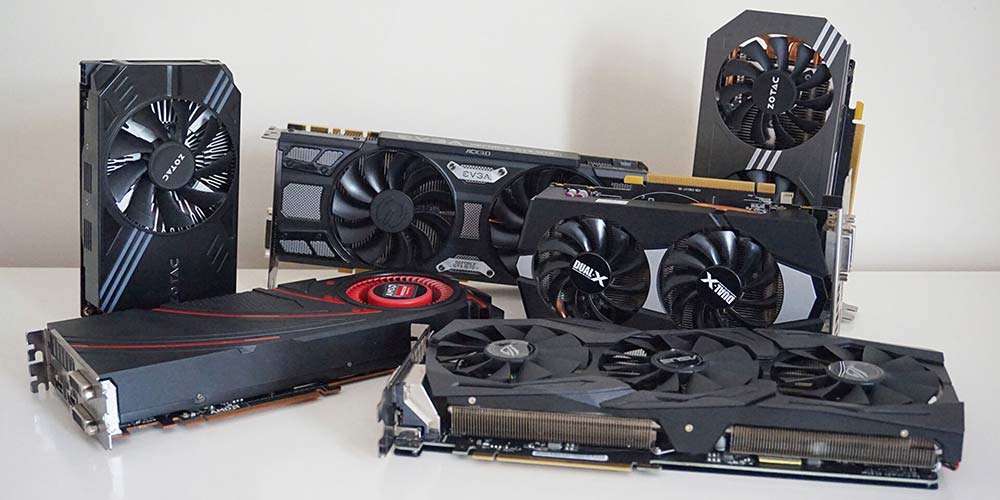
Graphics Card – Best for 2022
Graphics Card – Assuming you’re a PC gamer or a content maker who lives and breathes by the speed of your graphics-sped-up software.
So, we all know your video card is the motor that powers what you can do-or how vigorously you can gloat.
The guide that we have created will assist you with figuring out the best video-card choices for your desktop PC.
What you want to be aware of while upgrading a system, and how to assess whether a specific card is a decent purchase.
However, we’ll address a few upcoming patterns influencing which card you pick.
Customer video cards range from under $100 to more than $1,499.
So, it’s not an odd thing to sometimes overpay or under-buy.
However, we hope that this article prevents you from doing this.
Graphics Card GPUs
Now let’s think!
Most importantly, what does a graphics card do?
Furthermore, do you truly require one?
On the off chance, you have your heart set on a prebuilt desktop PC, obviously, except for a gaming-focused machine.
PC producers will de-underscore the graphics card for advancing CPU, RAM, or capacity choices.
At times, it is for a great reason; a cheaper PC might not have a graphics card.
They so depended instead on the graphics-sped-up silicon incorporated into its CPU (an “integrated graphics processor,” typically called an “IGP”).
Whether a discrete video card or an IGP, a cutting-edge graphics arrangement handles 2D and 3D information displays.
Furthermore, drawing the desktop and disentangling and encoding video content in projects and games.
The two organizations: AMD and Nvidia, typically develop these chips.
Graphics Card – Everything you need to know…
These processors are called “GPUs” for “graphics handling units,” a term that is additionally applied, confusingly, to the graphics card itself.
(Nothing about graphics cards, ahem! GPUs are straightforward!)
The two organizations stir up what is known as “reference designs” for their video cards, a normalized rendition of a card worked around a given GPU.
Now and again, these reference-design cards are sold straight by Nvidia (or AMD on rare occasions).
Graphics Cards and the Needs of Discrete GPU
We referenced integrated graphics (IGPs) above.
IGPs – Designed for addressing the necessities of most broad clients today, with three broad exemptions.
Proficient Workstation Users.
These people who work with CAD software or in video and photograph altering will, in any case, benefit extraordinarily from a discrete GPU.
Some of their critical applications can transcode video starting with one configuration then onto the next or perform.
Graphics Card –
Furthermore, other specific activities utilize assets from the GPU rather than those of the CPU.
Whether this is quicker will rely upon the application you referred to,
which explicit GPU and CPU you own, and different elements.
Efficiency Minded Users with Multiple Displays. Individuals who need countless showcases can likewise profit from a discrete GPU.
Desktop operating systems can simultaneously drive displays associated with the IGP and discrete GPUs.
If you’ve needed five or six presentations attached to a solitary system, you can consolidate an IGP and a discrete GPU to arrive.
You don’t require a top-of-the-line graphics card to do that.
So, all you want is a card that upholds the display specs, goals, screen points of interaction, and the number of panels you want.
On the off chance that you’re showing three internet browsers across three display panels, a GeForce RTX 3080 card, say, will not give any more significant advantage than a GeForce GTX 1660 with similar upheld yields.
Graphics Card – Keep Reading…
Gamers. Also, there’s the gaming market, to whom the GPU is ostensibly the central part.
RAM and CPU decisions both matters.
However, assuming you need to pick between a top-end system around 2018 with a 2022 GPU. Or even a top-end system today is still utilizing the best quality GPU you could purchase in 2018.
Graphics cards fall into two classes: purchaser cards implied for gaming and light happy creation work.
Furthermore, devoted cards are implied for professional workstations and designed for logical registering, estimations, and AI work.
This guide, and surveys, will zero in on the previous. However, we’ll address workstation cards somewhat later.
Graphics Card – Finally…
The key sub-brands you want to be aware of across these two fields are Nvidia’s GeForce and AMD’s Radeon RX (on the shopper side).
Nvidia keeps on ruling the top of the two business sectors.
AMD’s buyer cards, in the meantime, include the Radeon RX and (presently, for the most part, gone) Radeon RX Vega families.
However, before we dive into the singular lines exhaustively, we frame a couple of vital contemplations. You ought to make for any video-card buy.
Graphics Card Target Resolution and Monitor Tech
Resolution – Best described as the horizontal- by-vertical pixel count at which your video card will drive your screen. There is an immense bearing on which card to purchase and the amount you want to spend.
Assuming you are a PC gamer
A significant piece of what you’ll need to consider is the resolution when you are PC gamer . So, which video card is the most appropriate for gaming? These days, low-end cards will show regular high-resolution projects like 3,840 by 2,160 pixels (a.k.a., 4K).
However, for demanding PC games, those cards won’t have the ability to drive smooth casing rates at high resolutions like those.
In games, the video card computes positions, math, and lighting and delivers the onscreen picture progressively.
The higher the in-game detail level and screen goal you’re running, the more graphics-card muscle is required.
Graphics Card Resolution Is a Key Decision Point!
The three most normal resolutions at which the present gamers play is 1080p (1,920 by 1,080 pixels), 1440p (2,560 by 1,440 pixels), and 2160p or 4K (3,840 by 2,160 pixels).
By and large, you’ll need to pick a card appropriate for your screen’s native resolution.
